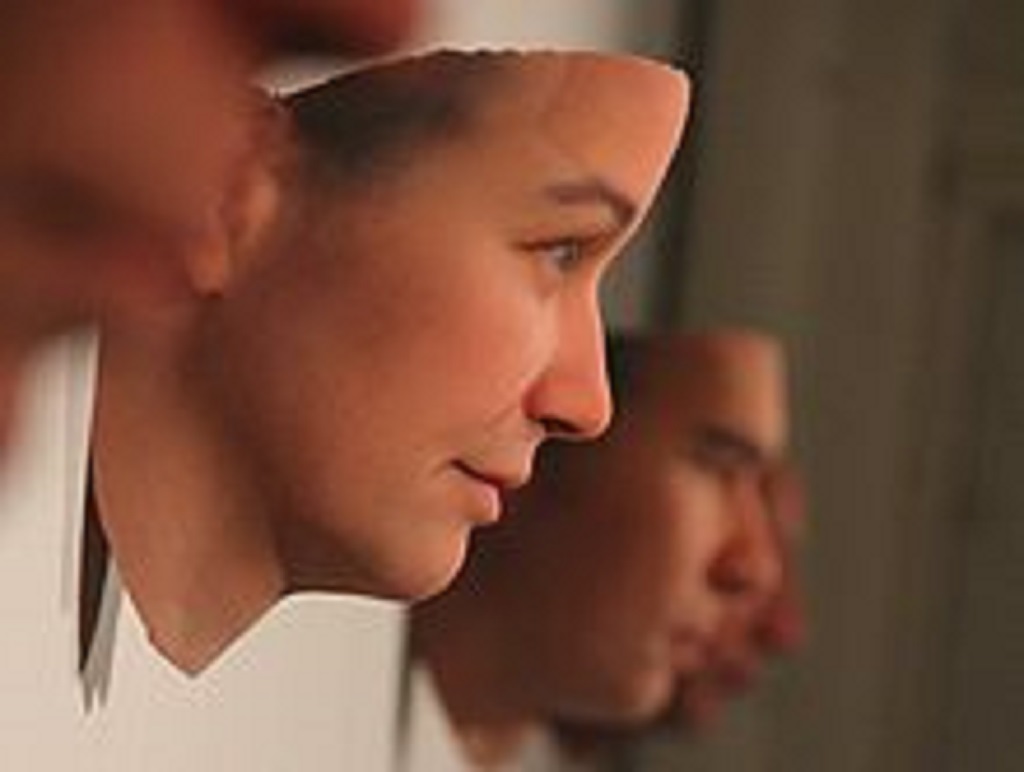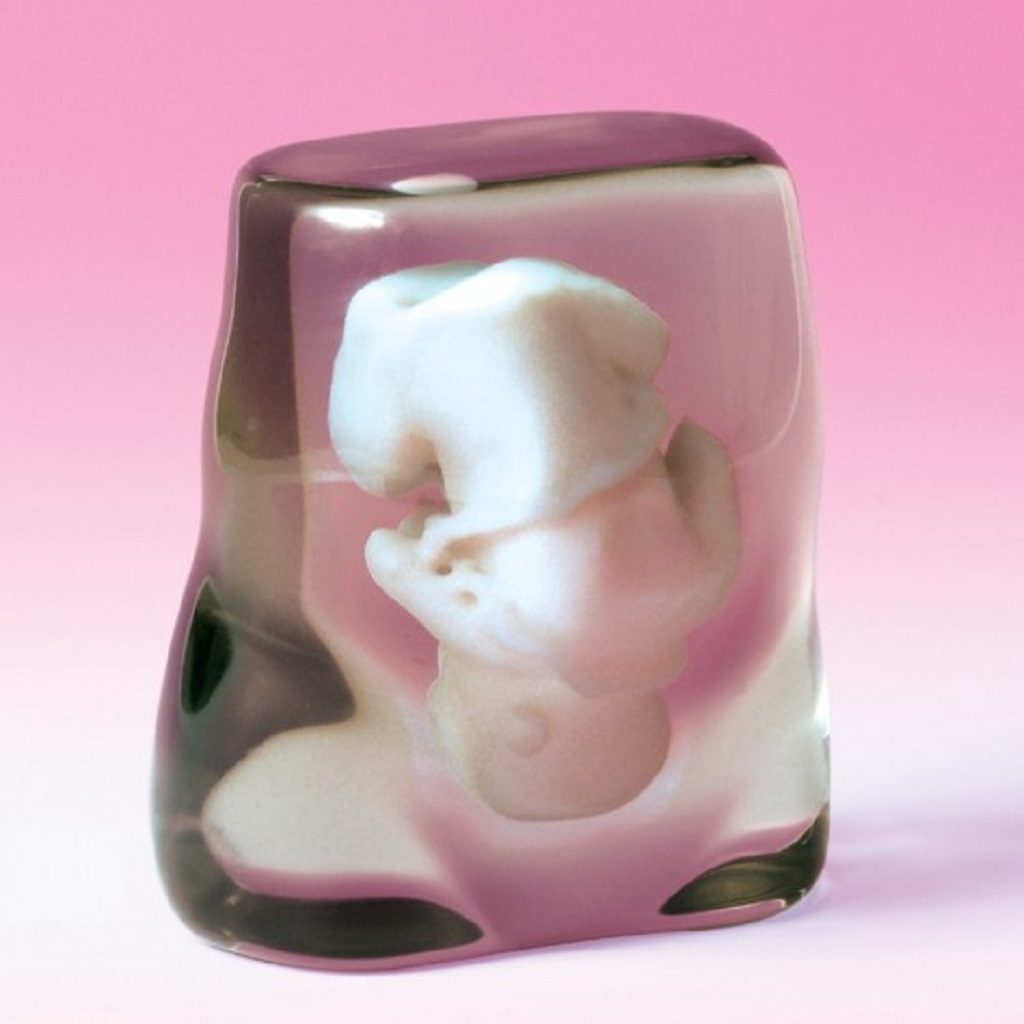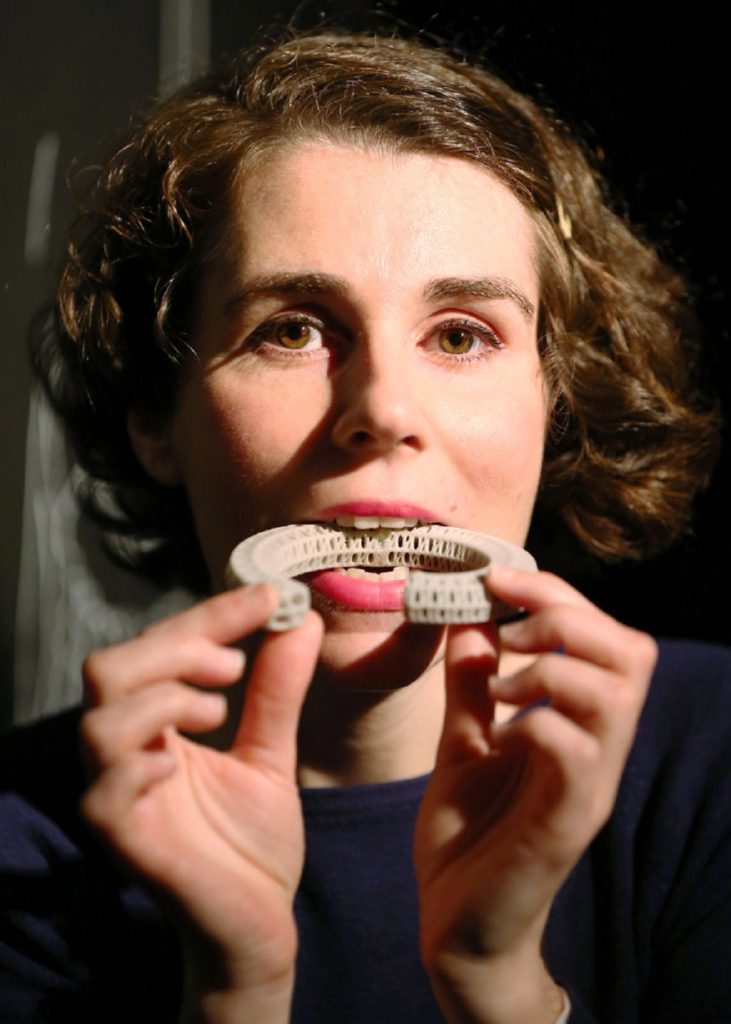
3D printing isn’t often associated with the word “spooky”, but as Halloween fast approaches, I couldn’t help but think of a few spooky 3D printing innovations that I’ve seen over the past few years.
Stranger Visions

The Stranger Visions project (2012-2013) by Heather Dewey-Hagborg created lifelike, computer-generated portraits using a person’s DNA.
Hagborg said:
“I was really struck by this idea that the very things that make us human — hair, skin, saliva, and fingernails — become a real liability for us as we constantly shed them in public. Anyone could come along and mine them for information.”
To kickstart her research for Stranger Visions, Hagborg took a three-week-long crash-course in biotechnology at the Genspace laboratory in New York. Here, she learned about the huge amounts of personal information that even the amateur biologist could collect using biotechnological processes.
First, she would extract DNA from her samples. For example, she would have to treat a hair sample with a gel that could dissolve the hair and a primer that would help locate other traits along the genome. This process alone could be repeated up to 40 times to identify eye color, hair color, racial ancestry, and other features involved in creating a portrait.
After the extraction of the DNA is complete, specific regions of the genome have to be amplified or copied using PCR to identify SNPs, which give further clues to a person’s genetic makeup and physical traits. Finally, Hagborg sent her results to 23andMe to create a genetic blueprint full of coded information detailing the positioning of the four nucleobases (DNA components) for the traits that she’s looking for. This information is fed into a customized computer program that she wrote, which deciphers all of the inserted code to provide a list of characteristics, which Hagborg used (with the help of a face-generating program) to 3D print her portraits in various ways that she finds aesthetically pleasing.
The goal of the project was to spark a debate surrounding the use or potential misuse of DNA profiling, privacy, and genetic surveillance. The controversy around this project is that just because people leave behind DNA, they are not consenting for it to be used in any way, so the research may be crossing ethical boundaries. In today’s day and age, with the technology that is within our reach, this kind of education is an eye-opener for the average person.
Shape Of An Angel

This particular innovation is the sweet type of scary. The intentions behind the initiative were pure, but are they taking the applications of 3D printing a little far too far?
In 2012 the Japanese engineering company Fasotec came up with “Shape of an Angel”, which is a 3D printed replica of your fetus while it’s still in the womb. The replica is printed using basic 3D printing techniques. First, the fetus is photographed with the help of an MRI and then put through imaging software, before being sent to print. The fetus is made with white resin and in cased in a womb made of clear resin. They even position the replica fetus accurately!
The final product is approximately 90 x 60 x 40 millimeters and comes with a lovely little jewellery box and a hefty fee of $1,230.
As personalized and sentimental as this innovation is, I have to admit that it’s definitely out of the ordinary.
Insects Au Gratin

Although eating insects may initially sound creepy, it may be the solution to world hunger. In the image above, installation designer Susana Soares is biting a biscuit made with insect flour at the 2014 “Insects au Gratin” exhibition in England. The Insects Au Gratin project involved LSBU’s Susana Soares, Andrew Forkes, and Dr. Ken Spears. It explored the environmental and nutritive aspects of entomophagy (eating insects for food) and 3D food printing technologies.
Susana Soares told Metro that:
“As the population grows, insects will be a solution to some food problems.”
The team made food by drying and grinding insects into a powdered flour which was then mixed into other food products to form an optimal consistency.
Dr. Spears explains that:
“Mealworms have proved to be quite useful — you can get a 40 to 50 per cent protein count. We have then been turning them into flour, combining that with a fondant paste and using that in a 3D printer.”
Research shows that insects are actually really good for us! Four crickets contain about as much calcium as a large glass of milk. Similarly, a dung beetle would give you more iron than you would get from a steak! From a practical standpoint, this research is incredible!
Where does 3D printing kick into all of this? Well obviously, eating bugs doesn’t sound like the most appealing thing to do, so the use of 3D printing technology helps overcome the aesthetic discomfort most people tend to experience when they imagine eating bugs.
Dr. Ken Spears told The Telegraph that:
“We are using this very hi-tech printing ability to try to encourage people to consider a new protein source . . . We would like to do things like printing cake toppings, flowers and designs. If we can get a substantial structure we can print bars, like cereal bars.”
Insect farming could potentially be a revolutionary new industry.
Final Words
When we look past the creepy or spooky aspects of these inventions, there is definitely a lot of fascinating technology in action.
For example, even though eating bugs sounds gross, in a world where not everyone has access to food, the idea is a game-changer. While 3D printing a fetus replica can be expensive and obviously strange, the experience and the memorabilia is unique! Finally, while using DNA to print portraits can be seen as violating privacy, there’s also a side to the invention that brings complex technology and awareness to light.
Happy Halloween!
